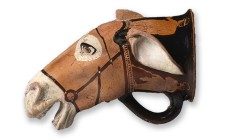Using Google Earth to identify site looting in Peru
The use of Google Earth imagery to locate and quantify looting damage in the Viru Valley on the North Coast of Peru both addresses the problem of looting of archaeological sites in Peru and contributes to the improved interpretation of archaeological settlement pattern data in the valley. The case of Peru is a particularly confounding one with regard to policy-level responses to looting. There is widespread documentation of the damage inflicted on archaeological sites by huaqueo/looting, and of the entanglement of local looting with an international market in looted antiquities (Elia 1997; Alva 2001; Atwood 2004; Higueras 2008, Contreras 2010). However, the antiquity of huaqueo in Peru – it dates to the earliest years of the Colonial Period, and perhaps earlier – has made its simple prohibition difficult (moreover, until the nineteenth century it was an entirely licit activity, even encouraged due to its provision of tax revenue) (Zevallos Quiñones 1994). In addition, the question of appropriate sovereignty over cultural heritage (that is, claims of the nation-state vs. claims of local communities) has been raised as a complicating factor (Smith 2005). If estimating damage from looting is difficult in most cases because much of the damage remains hidden (Brodie and Renfrew 2005; Bowman 2008), in Peru the damage is hidden in plain sight: the pitted expanses of looted cemeteries on the coast of Peru date back centuries, making it all too easy to dismiss damage from looting as endemic and even a fait accompli. Quantifiable estimates of damage from looting and estimates of the time periods in which looting has occurred can provide a means of assessing the damage still being done by looting and of linking damage to archaeological sites to trade in illicit antiquities. Given the proper context, publicly-available remotely sensed imagery can provide a basis for quantification of total damage to-date (Contreras and Brodie 2010), while historic aerial photographs (available from the Peruvian Servicio Aerografico Nacional) provide a means of identifying the antiquity of looting damage.
Images of looting in the Viru Valley can be seen on the images page.
Chart and Tabular data: Jordan
